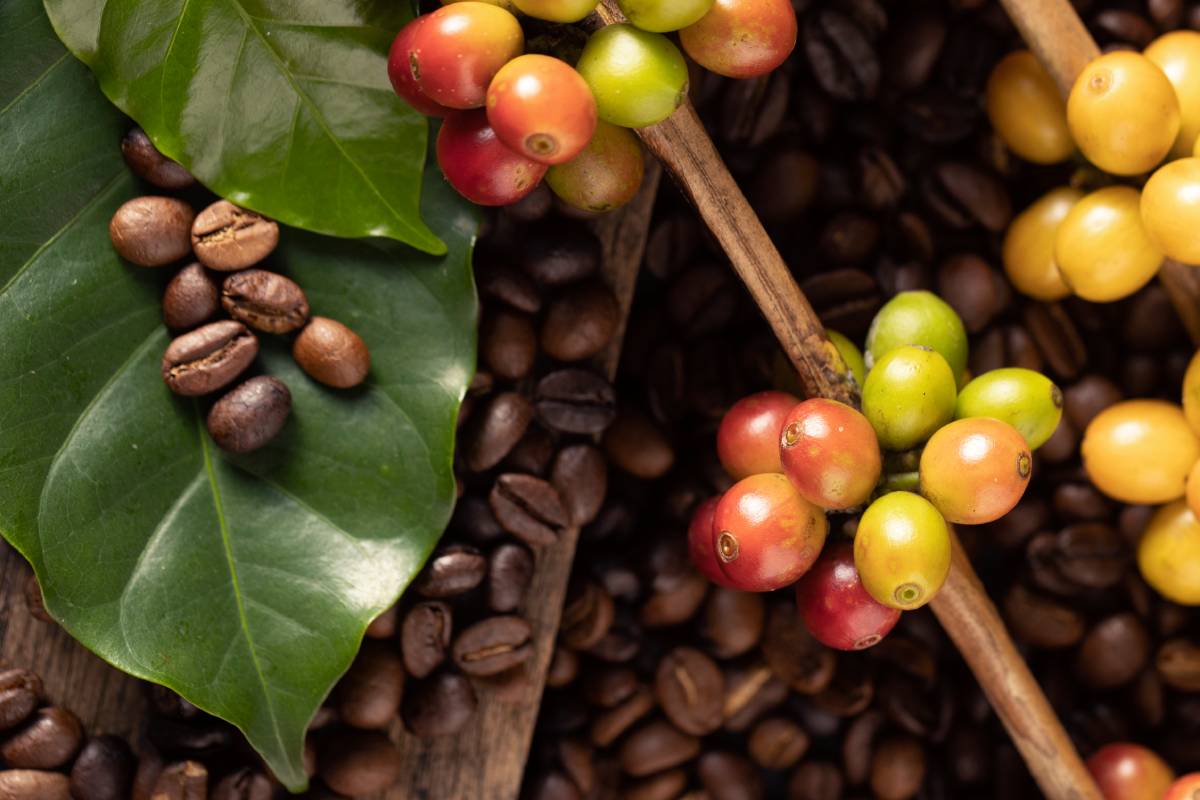Feeling lost when it comes to choosing coffee beans? Don’t worry! There are specific guidelines you can follow to ensure you find the perfect coffee for your preferences every time.
With over 70 countries producing around 10 million tons of green coffee beans each year, the task of selecting the right coffee can seem daunting.
So, how exactly do you go about choosing coffee beans? Are there other factors besides taste and price that you should consider?
Absolutely! In this comprehensive guide, I’ll cover everything you need to know to confidently select coffee beans from the wide array of options available.
Recognizing good coffee beans might seem like a daunting task, especially with the abundance of options available. But fear not! With a keen eye (and maybe a nose), you’ll soon become a connoisseur of quality coffee beans.
Here is how to choose your coffee at the beginning:
- Appearance: Good coffee beans often have a uniform shape and colour. They should be shiny but not oily, as excessive oiliness could indicate over-roasting. Avoid beans that appear dull, uneven, or discoloured, as these signs may indicate poor quality or improper processing.
- Aroma: Ah, the aroma! Good coffee beans emit a delightful fragrance that tantalizes the senses. Give the beans a gentle sniff, and you should detect rich, inviting aromas that hint at the flavour complexity awaiting you. If the beans smell stale, musty, or off-putting, they’re probably past their prime.
- Taste Test: The ultimate test of good coffee beans is, of course, the taste test! Brew a cup using your preferred method and pay attention to the flavour profile. Good beans will yield a balanced, flavorful cup with depth and complexity. Look for notes of fruit, chocolate, nuts, or other desirable flavours that enhance the overall experience.
- Origin: Like a fine wine, the origin of coffee beans greatly influences their flavour profile. Beans from different regions around the world offer unique characteristics. For example, beans from Ethiopia may have floral and fruity notes, while those from Colombia might be more balanced with hints of chocolate and nuts. Experiment with beans from various origins to discover your preferences.
- Price: While price isn’t always an indicator of quality, exceptionally cheap coffee beans are unlikely to offer the same level of flavour and freshness as higher-quality options. Invest in beans that are responsibly sourced and processed, even if they come with a slightly higher price tag.
- Packaging: Quality coffee beans are typically packaged in airtight bags with one-way valves to release excess carbon dioxide while preventing oxygen from entering. This packaging helps preserve freshness and flavour. Avoid beans packaged in flimsy or poorly sealed bags, as they may have been exposed to air and moisture.
- Reputation and Reviews: When in doubt, turn to the wisdom of others. Seek recommendations from friends, family, or fellow coffee enthusiasts, and read reviews online. Reputable coffee roasters and brands with positive feedback are more likely to offer high-quality beans.
- Sustainability and Fair Trade: As consumer awareness grows, so does the demand for sustainably sourced coffee. Look for beans from producers who use eco-friendly farming methods and support fair trade initiatives. Consider whether the production methods align with your values and avoid supporting practices that harm the environment or animals.
- Organic Certification (optional): Consider organic coffee, which is often produced by small, independent roasters in collaboration with coffee producers. Look for USDA-certified organic coffee with the appropriate seal on the packaging for added assurance of quality and sustainability.
Remember to keep these factors in mind and trust your senses. You’ll become a pro at identifying good coffee beans that will bring your coffee experience to the next level. Here’s to awesome coffee!

Avoiding bad coffee is just as crucial as seeking out the good stuff. Nobody wants to start their day with a disappointing cup of joe! Let’s navigate the murky waters of undesirable coffee with some straightforward tips:
- Stale Coffee: Stale coffee is a major no-no. It lacks the vibrant flavours and aroma of freshly roasted beans, resulting in a dull and lacklustre brew. To avoid stale coffee, look for beans with a recent roast date and use them within two to four weeks for optimal freshness.
- Poor-Quality Beans: Low-quality coffee beans can ruin your coffee experience. These beans are often mass-produced, poorly processed, and may contain defects or impurities. Signs of poor-quality beans include uneven size and shape, dull appearance, and a musty or sour aroma. Opt for beans from reputable sources known for their commitment to quality.
- Low-Grade, Mass-Produced Coffee: Steer clear of coffee packed in large bags unless you’re buying it for bulk use. Quality beans typically come in 12-ounce or 5-pound bags, ensuring fair prices and freshness in every cup.
- Bitter or Sour Taste: A bitter or sour taste in your coffee could indicate several issues, including over-extraction, improper brewing technique, or low-quality beans. If your coffee consistently tastes bitter or sour, experiment with adjusting your brewing parameters or try a different batch of beans.
- Old Ground Coffee: Pre-ground coffee may be convenient, but it sacrifices freshness and flavour. Ground coffee starts to lose its freshness and aroma within minutes of grinding, so it’s best to grind your beans just before brewing. If you must use pre-ground coffee, opt for small batches and store them in an airtight container to minimize exposure to air and moisture.
- Artificial Flavors and Additives: Some flavoured coffees are infused with artificial flavours and additives to enhance their taste. While these may appeal to some people, purists prefer to enjoy the natural flavours of coffee beans without any additives. If you prefer a flavoured coffee, look for options made with natural ingredients or consider adding your own flavourings at home.
- Cheap Instant Coffee: Instant coffee is a convenient option for a quick caffeine fix, but not all instant coffees are created equal. Cheap instant coffees often contain low-quality beans and additives to cut costs, resulting in a bland and unappealing taste. Invest in higher-quality instant coffee or opt for freshly brewed coffee when possible.
- Poor Brewing Methods: Even the best coffee beans can’t compensate for poor brewing methods. Avoid using outdated or poorly maintained coffee equipment, as it can affect the taste and quality of your brew. Invest in high-quality coffee makers, grinders, and accessories, and follow best practices for brewing to ensure a delicious cup every time.
- Unethical and Non-Eco-Friendly Coffee: Choose coffee from reputable farmers who prioritize ethical practices, fair wages, and sustainability. Look for Fair Trade initiatives and eco-friendly farming methods like solar drying and reduced pesticide use.
- Scantily Labeled Coffee Bean Bags: Pay attention to the labels on coffee bean bags for important information about origin, blend, and freshness. Avoid beans with vague labelling and opt for those with clear information about their provenance and roasting date.
Another thing is you should always check for a “roasted on” date on your coffee labels to ensure that your coffee is top quality. “Best before” dates don’t really tell you the freshness of the beans, so don’t rely on those. Just make sure you pay attention to the label, and you’ll be drinking the freshest coffee possible.
Closing thoughts
When it comes to choosing coffee beans, there’s no one-size-fits-all approach! The most important factors to consider are the quality of the beans, their ethical and sustainable sourcing, and whether you enjoy the taste.
For those of us passionate about coffee sourcing, it’s essential to ensure that the beans meet high standards. Look for beans with excellent colour and cupping scores, ideally above 80.
Expand your palate by trying a variety of coffees with different flavour profiles. This will help you make informed decisions when selecting coffee and fully appreciate the nuances of this beloved beverage!
Ultimately, the best coffee for you is the one that suits your personal taste preferences. Don’t feel pressured to follow trends or drink coffee that doesn’t appeal to you. Experiment with different beans, roasts, and brewing methods until you find your perfect cup of coffee.



 Know Your Preferences: First things first, ask yourself what kind of coffee you enjoy. Do you prefer a bold, intense flavour or something smoother and milder? Knowing your preferences will guide you in selecting the right beans.
Know Your Preferences: First things first, ask yourself what kind of coffee you enjoy. Do you prefer a bold, intense flavour or something smoother and milder? Knowing your preferences will guide you in selecting the right beans.





Hey there just wanted to give you a quick heads up. The words in your article seem to be running off the screen in Firefox. I’m not sure if this is a formatting issue or something to do with browser compatibility but I figured I’d post to let you know. The layout look great though! Hope you get the problem fixed soon. Cheers